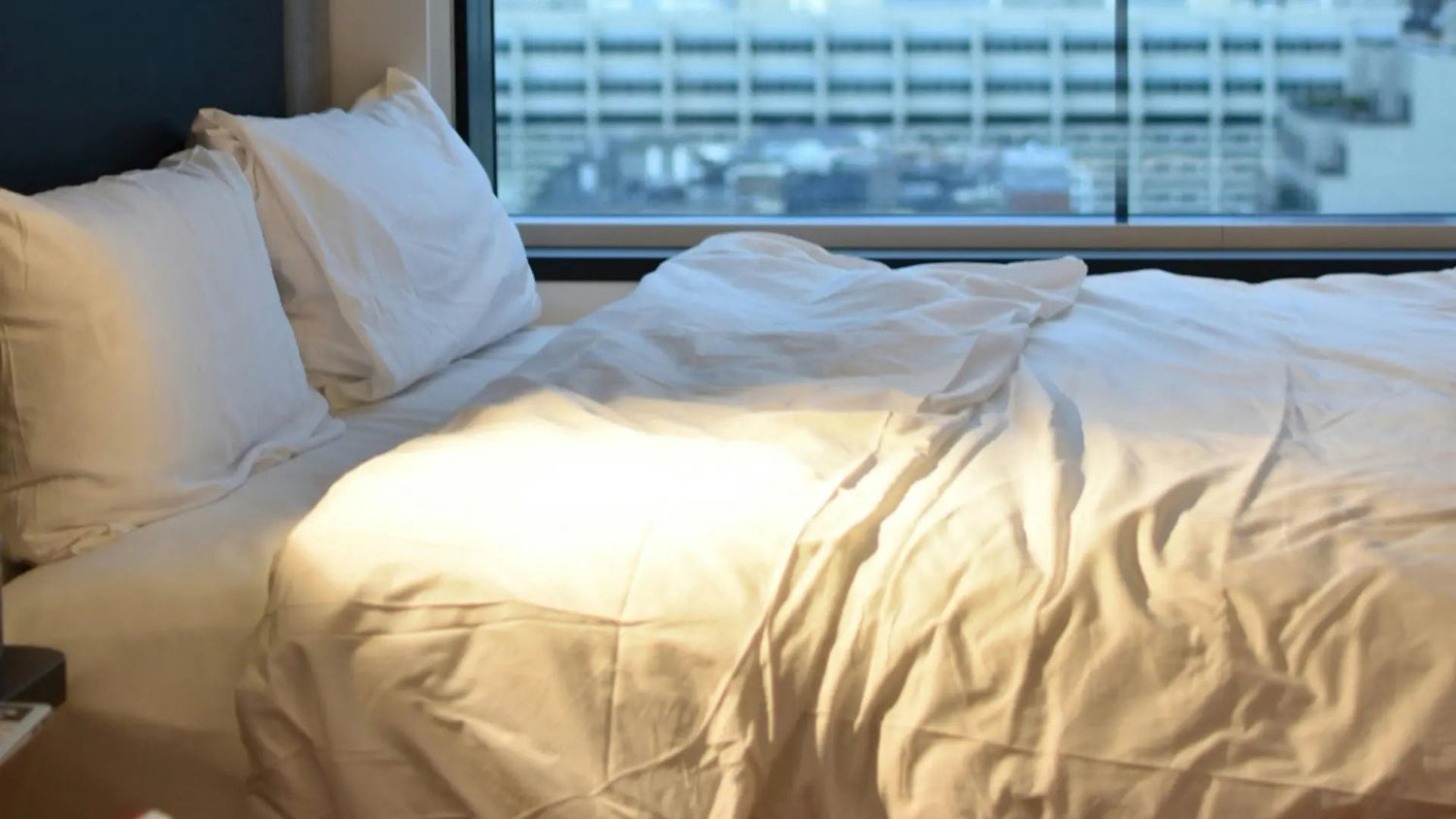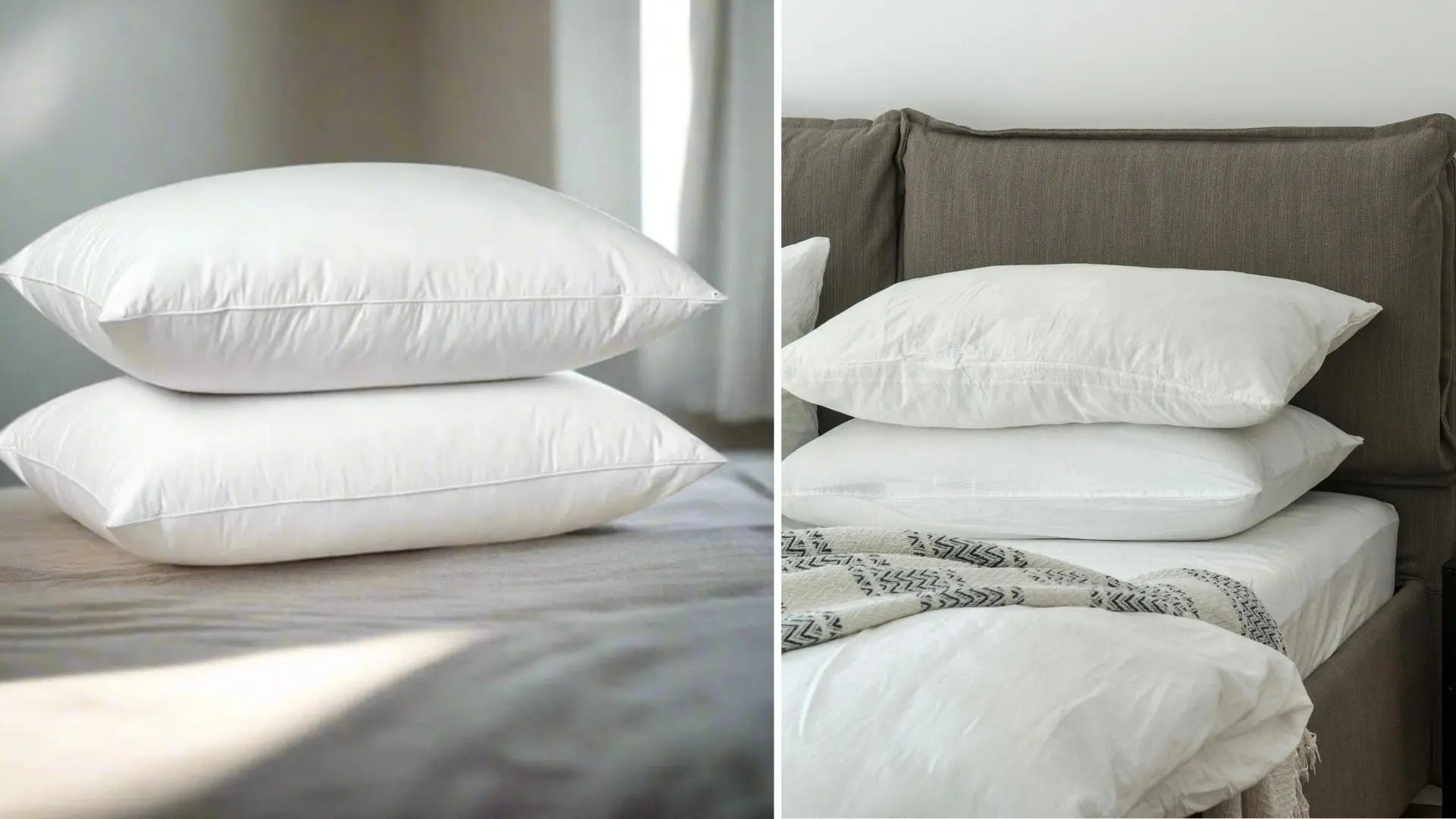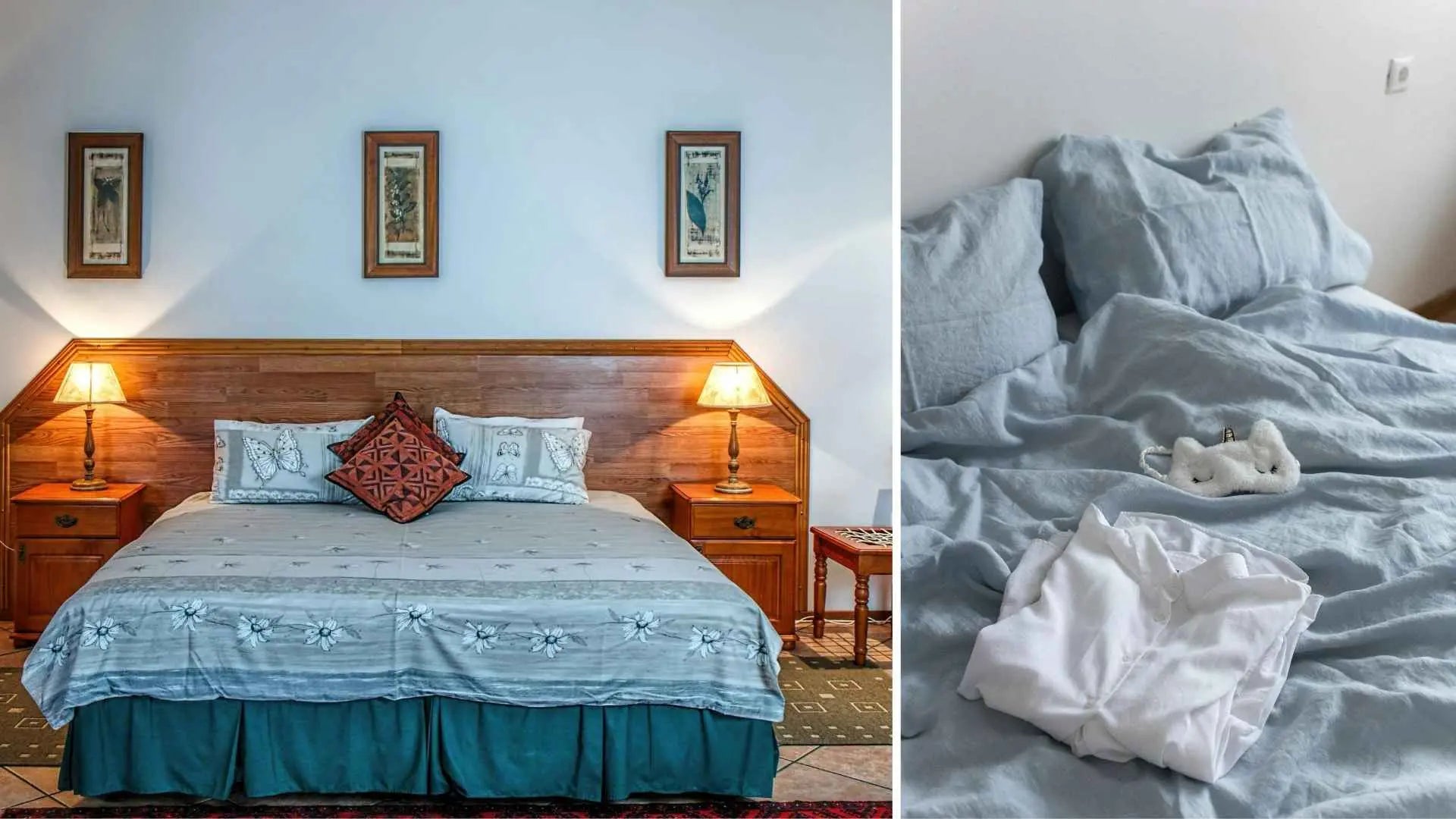Creating the perfect sleep sanctuary is more than just a design trend—it’s a vital part of improving sleep quality and enhancing overall well-being.
In today’s busy world, a restful night’s sleep is more important than ever.
However, achieving quality sleep is often a result of environmental factors, including the atmosphere of your bedroom.
Your sleep sanctuary doesn’t have to be extravagant.
Simple changes to your room—whether it’s adjusting the lighting, choosing the right bedding, or even reducing noise—can drastically improve your sleep quality.
Studies show that factors like temperature regulation, comfort, and a calming ambiance are directly linked to the quality of your rest.
In fact, a well-designed sleep environment can make all the difference in how well you sleep and feel upon waking.
This article will explore seven simple tips that can help you create the perfect sleep sanctuary.
Whether you suffer from sleep disruptions, stress, or simply want to upgrade your bedroom for better restful sleep, these design ideas can help you establish an environment conducive to relaxation and healing rest.
Let’s dive into the tips that will transform your bedroom into your ideal sleep haven.
Tip 1: Keep the Room Dark
One of the most effective ways to improve your sleep quality is by creating a dark environment.
Light exposure, especially during the night, can disrupt your body’s production of melatonin, the hormone responsible for regulating your sleep-wake cycle.
Studies from the National Sleep Foundation suggest that even small amounts of light can interfere with your ability to fall asleep and stay asleep.
How Darkness Improves Sleep Quality
- Melatonin Production: Darkness signals to your brain that it’s time to wind down. This triggers the production of melatonin, which helps you relax and drift into sleep.
- Restorative Sleep: A dark room encourages deeper REM sleep, allowing your body to rest and repair.
- Deeper Sleep Stages: A dark room promotes uninterrupted sleep, allowing your body to enter deep REM sleep, essential for cognitive function and physical recovery.
- Reduced Sleep Disruptions: Even brief exposure to artificial light from streetlights or electronic devices can fragment sleep and reduce sleep efficiency.
Here is a detail blog about impact of pillow types on sleep.
Practical Solutions to Achieve Total Darkness
- Blackout Curtains: These curtains block out light from outside, ensuring you sleep soundly even in bright urban environments.
- Sleep Masks: A comfortable sleep mask can help keep light away from your eyes, especially if you’re sensitive to light at night.
- Dim Lighting: Use soft, low-level lighting in the evenings to signal to your body that it’s time to wind down.
-
Consider Smart Lighting: Use dimmable or warm-toned lights in the evening to create a relaxing ambiance that signals to your body it’s time to wind down.
Expert Insight
“Exposure to light, even from devices like smartphones, can drastically impact your sleep patterns. For optimal sleep, the darker, the better,” says Dr. Sarah Miller, a sleep specialist at Mayo Clinic.
By reducing light exposure, you create a more relaxing atmosphere that encourages the body’s natural sleep rhythms.

Tip 2: Invest in Comfortable Bedding
The right bedding plays a critical role in transforming your bedroom into a perfect sleep sanctuary. It’s not just about aesthetics; comfort is the key to ensuring that your body gets the support it needs for a good night’s sleep.
Why Bedding Matters for Sleep Health
Your pillow, mattress, and sheets can significantly impact spinal alignment, pressure points, and body temperature—all factors that affect sleep quality. Firm mattresses may be ideal for back sleepers, while soft, breathable sheets are perfect for those who get warm during the night.
How Bedding Affects Sleep Health
- Spinal Alignment: A supportive mattress and pillow help maintain a neutral spine position, reducing aches and pains.
- Body Temperature Regulation: Breathable materials prevent overheating, which is a common cause of sleep disruptions.
- Pressure Relief: Memory foam and high-quality mattresses evenly distribute body weight, preventing pressure points and discomfort.
Pillow and Mattress Selection
Opt for a medium-firm mattress for optimal spinal support. Memory foam or hybrid mattresses can offer tailored comfort.
- Memory Foam Pillows: These conform to the shape of your head and neck, offering support for spinal alignment.
-
Medium-Firm Mattresses: A mattress that offers a balance of comfort and support helps align your spine, reducing the likelihood of waking up with neck or back pain.
Material Matters
- Organic Cotton: Soft, breathable, and chemical-free.
- Bamboo Sheets: Naturally moisture-wicking and cooling, perfect for those who tend to sleep hot.
Expert Recommendations
“Choosing the right pillow and mattress is as important as choosing the right lighting and temperature for your sleep sanctuary. Support and comfort are non-negotiable,” says Dr. Linda Miles, a wellness expert specializing in sleep therapy.
The combination of quality pillows, breathable bedding, and a supportive mattress creates an environment where you can enjoy a more restful and rejuvenating sleep.
Tip 3: Control the Temperature
The temperature of your room is one of the most crucial factors for achieving restful sleep. Overheating or being too cold can disrupt your natural sleep cycles and lead to tossing and turning throughout the night.
Why Temperature Regulation is Important
- Ideal Sleep Temperature: The National Sleep Foundation recommends keeping your bedroom between 60-67°F (15-20°C) to facilitate natural body cooling.
- Impact on Sleep Stages: Overheating can prevent deep REM sleep and cause frequent awakenings.
- Comfort Enhancement: A well-regulated temperature reduces tossing and turning, ensuring a peaceful night.
How Temperature Affects Sleep
- Optimal Sleep Temperature: Research suggests that an ideal sleep environment is between 60-67°F (15-20°C). A cooler room helps lower your core body temperature, which signals to your brain that it’s time to sleep.
- Quality of Sleep: A regulated temperature leads to deeper, more restorative sleep. Cooler temperatures are especially important for improving REM sleep and ensuring that your body stays in a deep sleep phase.
Solutions for Temperature Control
- Cooling Bedding: Consider cooling mattress pads or moisture-wicking sheets to maintain comfort throughout the night.
- Climate Control: Use fans, air conditioning, or heating pads to control the room temperature.
-
Smart Thermostats: These devices can be programmed to adjust the temperature of your room throughout the night for optimal sleep conditions.
Expert Insight
“Keeping your bedroom cool is a simple yet powerful way to enhance your sleep quality. It helps your body cool down and enter deeper stages of sleep,” says Dr. Raj Dasgupta, a sleep expert.
Explore all our products at Raia for luxury home.
Tip 4: Eliminate Noise Distractions (300 words)
Noise pollution can be a major sleep disruptor, leading to fragmented and poor-quality sleep. Even minor disturbances, such as distant traffic or household sounds, can affect sleep continuity.
The Impact of Noise on Sleep
- REM Sleep Interruption: Even small noises during the night can disrupt REM sleep, leading to fragmented sleep cycles.
- Increased Stress: Constant noise can lead to increased heart rates, high blood pressure, and higher levels of stress during sleep.
Practical Solutions for Reducing Noise
- White Noise Machines: These machines generate a consistent sound that drowns out sudden noises.
- Earplugs: A quick and affordable solution for blocking out disruptive sounds.
- Noise-Canceling Headphones: Ideal for those who need extra help blocking out loud, persistent noises.
- Soft Furnishings: Thick rugs, curtains, and upholstered furniture absorb sound and reduce echoes.
Expert Tip
“Noise is a sleep disruptor that most people underestimate. It’s important to create a quiet, peaceful sleep environment to foster deep, restorative rest,” says Dr. Fiona Lemoine, a specialist in sleep disorders.
Read more about how to maintain your luxury bedding
Tip 5: Choose Calming Colors

The colors in your bedroom can have a profound effect on your mental state and, consequently, your sleep quality. Studies show that color choices influence relaxation, making certain hues more conducive to sleep.
How Colors Affect Sleep
- Calming Colors: Soft, muted tones like blue, green, and lavender have a calming effect on the mind and body, promoting relaxation.
- Colors to Avoid: Bright or stimulating colors like red, yellow, and orange can create tension and make it harder to wind down.
Bedroom Color Ideas for Sleep Sanctuaries
To create a peaceful retreat for rest, consider incorporating the following colors into your bedroom design:
- Soft Blues: A pale, powdery blue not only lowers blood pressure but also has a calming effect on the mind, helping you relax after a long day.
- Earthy Greens: Light greens like sage or soft olive tones are perfect for creating a peaceful vibe. Green has been found to reduce anxiety and promote calmness.
-
Light Grays and Off-Whites: These neutral tones help balance the room and promote tranquility without being too cold or sterile. Off-white tones can create an airy and spacious feel while promoting a restful environment.
Expert Insight
“Color plays a psychological role in relaxation. Soft colors encourage a restful atmosphere that helps the body relax and prepare for sleep,” says Dr. Susan L. Johnson, a psychologist and sleep expert.
Here is a ultimate guide to sustainable bedding
Tip 6: Declutter Your Space
A cluttered bedroom can create mental stress, which negatively impacts your ability to relax and fall asleep. A clean and organized space promotes calmness and helps you unwind at the end of the day.
Why Decluttering Matters
A cluttered room can negatively affect your sleep by creating mental distractions, increasing stress levels, and preventing relaxation.
When your space is disorganized, it can be hard for your mind to calm down and prepare for sleep.
- Mental Stress: A cluttered room can negatively affect your sleep by creating mental distractions, increasing stress levels, and preventing relaxation. When your space is disorganized, it can be hard for your mind to calm down and prepare for sleep.
-
Reduced Relaxation: A clutter-free space helps signal to your brain that it’s time to wind down and relax. When your environment feels calm and organized, you are more likely to feel at ease and be able to transition into sleep with ease.
Decluttering Tips for Your Sleep Sanctuary
- Minimalist Furniture: Keep only the essentials in your bedroom, such as a bed, nightstands, and a dresser. Avoid overcrowding the room with unnecessary furniture or decorative items. The less you have in the room, the more serene it will feel.
- Storage Solutions: Maximize your space by incorporating under-bed storage, multifunctional furniture (like storage ottomans or beds with drawers), and wall-mounted shelves. This helps reduce visible clutter and keeps the room looking tidy.
-
Keep Electronics Away: Electronics like smartphones, TVs, and laptops emit blue light, which can interfere with your circadian rhythm and disrupt sleep.
Keep these devices out of your bedroom to create a calm, tech-free space that promotes relaxation. If you need a clock, opt for an analog one instead of using your phone.
Tip 7: Add Soothing Aromas

Scent is a powerful tool for enhancing relaxation and promoting restful sleep. Certain scents can trigger the body’s natural
relaxation response, helping you unwind before bed.
How Aromas Affect Sleep
Aromatherapy has long been used to improve sleep quality and promote relaxation.
Certain scents have a calming effect on the nervous system, helping to reduce stress and anxiety, which can lead to deeper, more restful sleep.
- Lavender: One of the most well-known sleep-inducing scents, lavender has been shown to reduce anxiety, lower blood pressure, and promote relaxation. A study conducted by the University of Southampton found that people who used lavender oil experienced improved sleep quality.
- Chamomile: Chamomile is another calming scent that can help reduce stress and promote relaxation. Often associated with bedtime tea, chamomile essential oil can also be diffused in the air to create a peaceful atmosphere.
- Other Scents: Scents like sandalwood, ylang-ylang, and bergamot are also known to promote relaxation and reduce stress, making them perfect for your sleep sanctuary.
How to Incorporate Scents into Your Sleep Sanctuary
- Essential Oils: Using a diffuser with lavender or chamomile essential oils is one of the best ways to fill your room with calming fragrances. Simply add a few drops of your favorite calming essential oil to the diffuser and let the soothing scent envelop your space. You can also add a few drops to a cotton ball or fabric sachet near your pillow.
- Scented Candles: If you prefer candles, choose non-toxic, natural candles made from soy wax or beeswax. Opt for a lavender or chamomile scent to create a peaceful, relaxing atmosphere before bedtime. Be sure to extinguish candles before going to sleep for safety.
-
Herbal Sachets: Another simple way to incorporate calming scents is by placing dried herbs like lavender or chamomile in small fabric sachets and placing them under your pillow or near your bed.
Expert Tip
“Aromatherapy can significantly improve sleep by triggering the relaxation response in the brain. Scents like lavender and chamomile can help signal to your body that it’s time to sleep,” says Dr. Emily Harris, a sleep specialist.
Conclusion
Creating the perfect sleep sanctuary is an investment in your health and well-being.
By following these seven simple tips, you can design a bedroom that promotes restful sleep, reduces stress, and encourages a deeper, more rejuvenating sleep cycle.
Whether it's adjusting the lighting, decluttering your space, or choosing the right pillow, every little change contributes to a better sleep environment.
FAQs
-
What are the best colors for a sleep sanctuary?
Soft blues, greens, and neutral tones are ideal for creating a calming atmosphere that promotes relaxation and better sleep. -
How can I reduce noise in my sleep environment?
Use white noise machines, earplugs, or noise-canceling headphones to block out disruptive sounds and improve sleep quality. -
What furniture is best for a sleep sanctuary?
Minimalistic furniture like a simple bed frame, bedside table, and a comfortable chair will keep the space serene and uncluttered. -
How can I improve my sleep environment without spending a lot?
Focus on small changes like decluttering, using soft lighting, and adding soothing scents to create a more restful environment.






Leave a comment
This site is protected by hCaptcha and the hCaptcha Privacy Policy and Terms of Service apply.